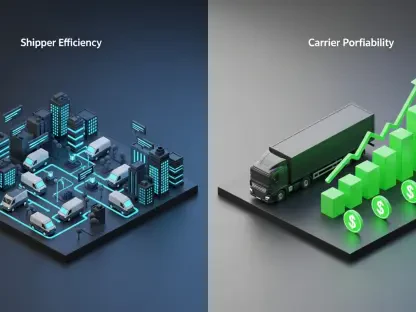Over the years, the financial landscape has witnessed continuous evolution, with technological advancements playing a pivotal role in reshaping the dynamics of various sectors. One of the most transformative aspects of this evolution is the rise of AI-powered tools in financial automation. These tools, leveraging artificial intelligence and machine learning, promise not only to enhance efficiency and accuracy but also to revolutionize decision-making processes. As organizations increasingly embrace these advanced technologies, the financial automation market is on the verge of experiencing unprecedented growth.
Evolution of Financial Automation
Growth Trajectory and Market Valuation
The financial automation market, which was valued at $8.1 billion last year, is expected to grow significantly, reaching $18.4 billion by the end of the decade. This projection indicates a compound annual growth rate (CAGR) of 14.6%, highlighting the substantial expansion of this sector. Key segments driving this growth include tax automation and accounting automation. The tax automation segment alone is anticipated to achieve a market size of $6.9 billion by the end of this period, with a CAGR of 13.9%. Meanwhile, the accounting automation segment is poised for even faster growth, projected to expand at a 15.2% CAGR.
Several factors are contributing to this remarkable market expansion. One of the primary drivers is the increased adoption of cloud-based systems, which offer numerous benefits such as scalability, cost-effectiveness, and seamless integration with existing platforms. Advances in data analytics also play a crucial role. Organizations can now leverage big data to predict financial trends and make more informed decisions. Additionally, the rise of digital payment systems and the shift towards cashless economies further fuel the demand for automated tools capable of efficiently managing large transaction volumes.
Impact on Business Operations
The profound impact of financial automation on business operations cannot be overstated. Automation extends its reach from basic tasks, such as payroll management and invoice processing, to more complex functions like financial forecasting and regulatory compliance. The integration of AI and machine learning is indispensable in this scenario, where predictive analytics come into play, enabling organizations to forecast financial outcomes with enhanced accuracy.
Financial automation also alleviates the administrative burden on businesses, allowing human resources to focus on more strategic activities. The automation of routine tasks minimizes the risk of human errors and ensures consistency and reliability in financial reporting. Moreover, these technologies facilitate real-time monitoring and reporting, providing businesses with instant access to critical financial data essential for immediate decision-making. By streamlining operations and enhancing efficiency, financial automation tools are redefining the landscape of business finance management.
Regional and Sectoral Trends
Geographical Expansion
The financial automation market is witnessing significant growth across various geographic regions. In the U.S., the market was valued at $2.1 billion last year and continues to expand at a notable pace. Meanwhile, China’s market is showing an impressive growth trajectory with a CAGR of 13.8%, projected to reach $2.9 billion by the decade’s end. Other regions such as Japan, Canada, Germany, and the broader Asia-Pacific area also display distinct growth patterns and potentials, underscoring the widespread adoption of financial automation solutions.
Different regions exhibit unique market dynamics driven by varying regulatory environments, economic conditions, and technological advancements. For instance, in regions with stringent regulatory requirements, the adoption of financial automation tools is often seen as a necessity to ensure compliance. On the other hand, in emerging economies, the rapid adoption of digital payment systems is a key driver for financial automation. The globalization of markets has further intensified the need for systems that can manage multi-currency transactions and comply with international regulations, ensuring consistent financial operations across borders.
Adoption by SMEs and Consumer Trends
Small and medium-sized enterprises (SMEs) are particularly inclined towards adopting financial automation solutions, primarily to mitigate resource constraints and enhance competitiveness. The agility and scalability of automated systems offer SMEs the advantage of competing with larger enterprises by optimizing their financial operations. Furthermore, the rise of mobile banking, e-commerce, and digital wallets has significantly influenced consumer behavior, driving the demand for advanced financial automation solutions.
The consumer shift towards digital and mobile platforms necessitates the adoption of sophisticated tools capable of handling an increasing volume of transactions and processing payments swiftly. Automated systems not only meet these demands but also provide enhanced security features essential in safeguarding sensitive financial data. As consumer expectations continue to evolve, businesses need to stay ahead by integrating these advanced technologies to maintain trust and provide seamless financial services.
Future Outlook and Considerations
The financial landscape has undergone continuous evolution, with technological advancements playing a crucial role in reshaping the dynamics of various sectors. One of the most transformative elements of this evolution is the advent of AI-powered tools in financial automation. These tools, which utilize artificial intelligence and machine learning, not only promise to enhance efficiency and accuracy but also have the potential to completely revolutionize decision-making processes within the financial world. By analyzing vast amounts of data more swiftly and accurately than humanly possible, these AI-driven systems can identify patterns, predict market trends, and provide real-time insights that were previously out of reach. As more organizations increasingly adopt these advanced technologies, the financial automation market is on the brink of experiencing enormous growth. This surge will likely bring about further innovations and refinements, leading to a more efficient, data-driven, and responsive financial sector that can adeptly meet the challenges and opportunities of the future.









